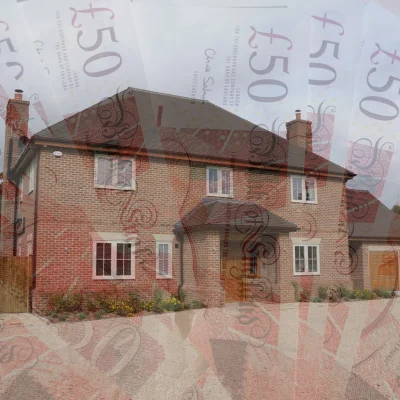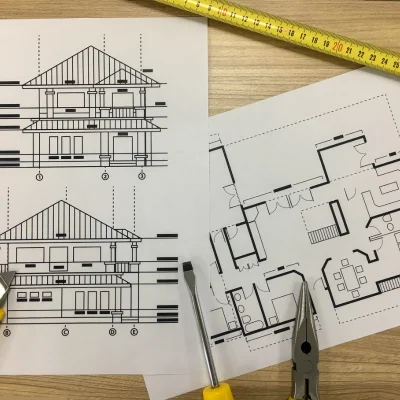Today, we’re diving into the concept of “further advance” on your mortgage. You might be familiar with remortgaging, but a further advance is a different tool that can give you more flexibility and cash flow without changing your current lender. It’s a way to borrow more on your existing mortgage while keeping your original terms intact.
Let’s explore the ins and outs of a further advance, the role of equity in your home, and the steps involved in accessing this additional borrowing power. Whether you’re looking to fund renovations, consolidate debts, or invest in a new venture, I’ll guide you through everything you need to know about further advances and how they can work for you.
What is a Further Advance?
A further advance is when you borrow more money on your mortgage with your current lender. This additional amount borrowed will typically be at a different interest rate to the rest of your outstanding mortgage.
For example – Your property is worth £200,000 and you currently have £50,000 left on your current mortgage which is fixed for 5 years at 2%.
You could apply to your current lender to take out a further advance of £50,000. If the lender agrees you would now have a £100,000 mortgage on your property.
The original £50,000 mortgage would remain fixed for 5 years at 2%
The further advance of £50,000 would be on a different interest rate, the rate would be applicable to what that lender is offering at the time, it could be higher or lower.
How does a further advance differ from remortgaging?
With a further advance you are taking on additional lending with your current lender secured against the same property. With a remortgage you will not borrow more money on your mortgage, and you will change your lender. These are the main differences.
It is possible to remortgage and take out a further advance at the same time.
People often get these two terms confused or don’t fully understand the difference, if you are more interested in remortgaging check out my post on remortgages here.

Understanding what is equity in a house
In order to be able to obtain a further advance you will need to have equity in your house. You can easily work out how much equity you have in your property, all you have to do is take your current property value and subtract it from your outstanding mortgage.
Using the example above – Your property is worth £200,000 and you currently have £50,000 left on your current mortgage. You would subtract the outstanding mortgage balance (£50,000) from the property value (£200,000) meaning you have £150,000 equity in your property.
It is important to note you can also be in ‘negative equity’ This is where your current outstanding mortgage balance is more than the current property value.
Importance of equity in obtaining a further advance.
Equity is the single most important aspect of a further advance, if you don’t have any equity in your property then you are not going to be able to get a further advance on your mortgage. A lender will not lend anyone more money than the property the mortgage is secured against is worth.
So before you ask how much equity can I borrow from my home, you first need to ensure you actually have equity because if you don’t the answer is nothing.

How to Get Money Out of Your House Without Selling?
You guessed it, a further advance!
A further advance in general will offer the best interest rate and is normally fairly straightforward to apply for, so is the go to option when looking to get money out of your house without selling.
Now there are a few other options but I am only covering further advances here. I will list them below but please note they are not going to be suitable for everyone, and you should seek professional advice to consider your options:
- Lifetime Mortgage
- Home reversion plan
- Secured Loan
How Does Taking Equity Out of Your House Work?
Once you have worked out how much equity you have in your property you then need to get it out in the form of money in your pocket. Here I will give a brief outline of the process.
1. Firstly you will need to know how much you actually need. There is no use in going full steam ahead and finding out you needed more, or less!
2. Once you know how much you need, do you have enough equity? Remember above in ‘Understanding what is equity in a house’ I showed you how to work this out.
3. If you have enough equity in your property to match the amount you need then you have two options
Option 1 – Go directly to your current lender and speak to them. Their advisors will be able to advise on their products they offer and advise accordingly.
Option 2 – Go to an independent mortgage advisor and speak to them for advice, if they have access to the whole of market they will be able to look at multiple lenders and offer advice across multiple products from multiple lenders.
4. If your current lender is happy to proceed with offering a further advance then this is the most straightforward scenario.
If your current lender is not able to offer a further advance to you, then another option is to remortgage (move your current mortgage to a different lender) and take out a further advance at the same time with the new lender.
Here in my opinion you should be speaking to an independent mortgage advisor. You will want to make sure you fit into the new lenders criteria on both the remortgage and further advance before you apply!
5. Once you have found the right lender for you, then apply for your further advance and once approved they will send the money to your designated account provided on application.
Additional Borrowing on Mortgage: What to Know
Taking the decision to borrow more money on your mortgage via a further advance is not a decision that should be taken lightly. You are increasing the amount of debt you have secured against your property, meaning if you can’t keep up with the higher repayments you could lose your home.
Key things to consider when taking out a further advance
- Are the new monthly repayments affordable long term? – Remember the further advance is secured against your property!
- The lender will do affordability checks – The lender is going to look at your income and spending habits/ bills to ensure you meet their requirements
- Can be expensive – Further advances are generally cheap in terms of lower repayments however they are normally matched to your current remaining term on your mortgage so over the long term you may be paying back a lot more in interest than a comparable personal loan for example.
- What is the money being used for? – A lender will be more comfortable approving a further advance when the money is being used on property renovations as this should add value to the property. Whereas if it is being used to buy a new car the lender may have less appetite to lend.
- Your loan to value (LTV) – By borrowing more you are going to increase your LTV meaning you may be pushed into products with higher interest rates, this becomes increasingly more important when remortgaging or switching products on your current outstanding mortgage.
How Much Equity Can I Borrow From My Home?
There is no straight forward answer here. Typically most lenders at present offer products up to 95% loan to value (LTV). For example for a £100,000 property they will lend a maximum of £95,000 (95% of the property value)
So as a rough rule of thumb, the maximum you could get is the difference between your current LTV and a 95% LTV. For example:
Property value – £200,000
Outstanding mortgage – £100,000
95 % LTV figure – £190,000
Maximum further advance – £90,000 (95% LTV – Outstanding mortgage)
Now this is a very rough estimate, it does not take into account your affordability, just because you have that amount of equity available, does not mean you can actually afford to make the repayments on it.
There are plenty of factors that will affect your affordability such as income, debts, age, dependents. These must be taken into consideration, a good mortgage advisor will go through your affordability and advise you on the maximum amount you can take with a further advance.
Can You Remortgage to Buy Another Property?
Yes! You can take out a further advance on your property and use the money to buy another property. Again as mentioned above in ‘Additional Borrowing on Mortgage: What to Know’ all the key things to consider apply for your further advance.
Additionally if you are planning on using the money for a deposit to buy another property you will then need to be sure that you are in a position to be able to afford all the normal fees when buying a property as well as the additional stamp duty that will be due for 2nd homes.

Home Improvement Mortgages
There is no such thing as home improvement mortgages, however a further advance can release money in your property to enable you to carry out home improvements that may have been otherwise unaffordable.
All the information mentioned above still stands in regards to getting approved for a further advance. When deciding on what work you want to do it is best to think of what do you actually need, is it more space, general decorating, new kitchen, summer house in the garden etc.
Once you understand what your requirements are then it is always good to understand how these requirements can best be met and how you can maximise the potential increase on property value that the works could have.
Here is a great little blog from Zoopla explaining which improvements add the most value to a property. It is worth noting that all areas of the country are different, something may add loads of value in one area and nothing in another, this is where estate agents can be handy, have a chat with local ones and pick their brain for what the local area likes.
So, we’ve covered a lot about further advances on your mortgage—from what they are to how they work, and even how they differ from remortgaging. If you’re considering a further advance, I hope this guide has given you some clarity and a better understanding of what it entails.
Before you take any action, remember that borrowing more money on your mortgage isn’t something to rush into. You need to weigh the benefits against the risks. Are you comfortable with potentially higher interest rates? Do you have enough equity to support a further advance? And most importantly, can you afford the increased monthly repayments?
If you’re still unsure, please do not hesitate to get in touch with me. I am an independent whole of market mortgage advisor who does not charge a fee. I can guide you through your options and help you make an informed decision. Whether you’re looking to renovate your home, invest in another property, or just need some extra cash, understanding the implications of a further advance is crucial.

